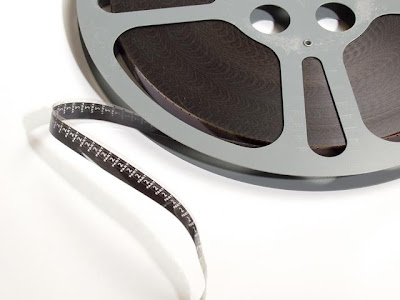
Non-linear editing for film and television postproduction is a modern editing method which involves being able to access any frame in a video clip with the same ease as any other. This method is similar in concept to the "cut and paste" technique used in film editing from the beginning. However, when working with film, it is a destructive process, as the actual film negative must be cut. Non-linear, non-destructive methods began to appear with the introduction of digital video technology. It can also be viewed as the audio/video equivalent of word processing, which is why it is called desktop editing in the consumer space [1].
Video and audio data are first captured to hard disks or other digital storage devices. The data is either recorded directly to the storage device or is imported from another source. Once imported they can be edited on a computer using any of a wide range of software. For a comprehensive list of available software, see List of video editing software, whereas Comparison of video editing software gives more detail of features and functionality.
In non-linear editing, the original source files are not lost or modified during editing. Professional editing software records the decisions of the editor in an edit decision list (EDL) which can be interchanged with other editing tools. Many generations and variations of the original source files can exist without needing to store many different copies, allowing for very flexible editing. It also makes it easy to change cuts and undo previous decisions simply by editing the edit decision list (without having to have the actual film data duplicated). Loss of quality is also avoided due to not having to repeatedly re-encode the data when different effects are applied.
Compared to the linear method of tape-to-tape editing, non-linear editing offers the flexibility of film editing, with random access and easy project organization. With the edit decision lists, the editor can work on low-resolution copies of the video. This makes it possible to edit both standard-definition broadcast quality and high definition broadcast quality very quickly on normal PCs which do not have the power to do the full processing of the huge full-quality high-resolution data in real-time.
The costs of editing systems have dropped such that non-linear editing tools are now within the reach of home users. Some editing software can now be accessed free as web applications; some, like Cinelerra (focused on the professional market) and Blender3D, can be downloaded free of charge; and some, like Microsoft's Windows Movie Maker or Apple Computer's iMovie, come included with the appropriate operating system.
A computer for non-linear editing of video will usually have a video capture card to capture analog video and/or a FireWire connection to capture digital video from a DV camera, with its video editing software. Modern web based editing systems can take video directly from a camera phone over a GPRS or 3G mobile connection, and editing can take place through a web browser interface, so strictly speaking a computer for video editing does not require any installed hardware or software beyond a web browser and an internet connection.
Various editing tasks can then be performed on the imported video before it is exported to another medium, or MPEG encoded for transfer to a DVD.


















